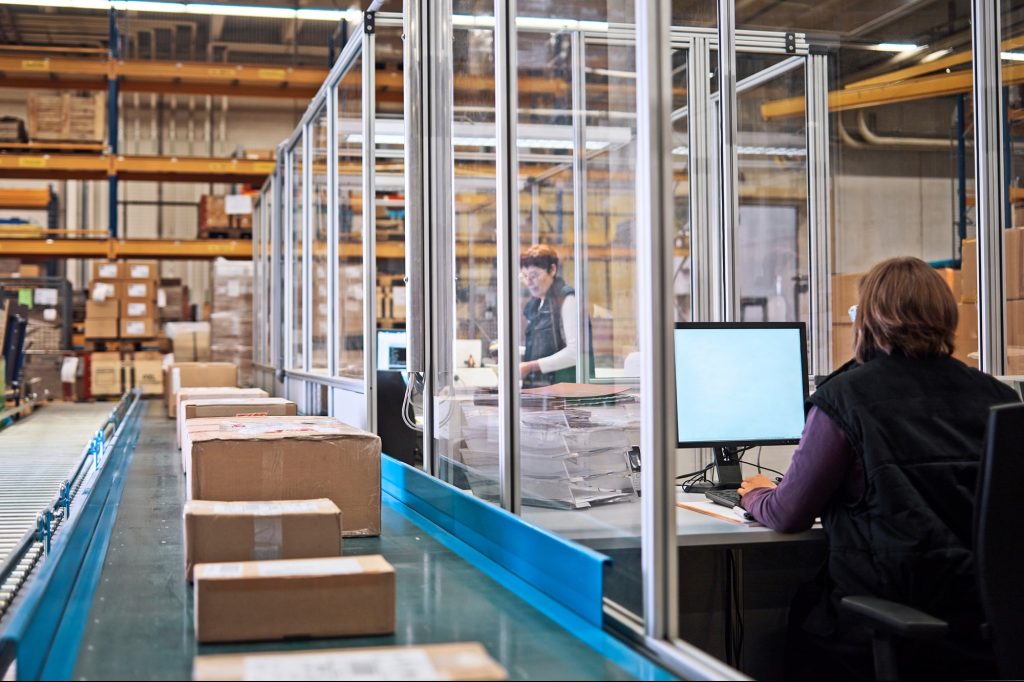Supply chain management plays a pivotal role in the success of any enterprise. Entrepreneurs and business owners are constantly seeking innovative ways to optimize their supply chains, reduce operational costs and enhance overall efficiency.
This is where the Internet of Things (IoT) and smart technologies step in to revolutionize the field of supply chain management.
Related: Supply Chain Management: The Game-Changing Innovations That Are Shaping the Industry
The role of IoT in supply chain management
IoT refers to the interconnected network of physical devices, vehicles, buildings and other objects embedded with sensors, software and network connectivity that enables them to collect and exchange data. When integrated into supply chain operations, IoT can bring about a transformational shift in the way businesses manage their logistics and distribution processes.
1. Real-time tracking and visibility:
In the context of supply chain management, real-time tracking and visibility are game-changers. IoT devices, such as GPS sensors and RFID tags, provide continuous data streams that allow entrepreneurs to monitor their goods at every stage of the supply chain journey. This means they can pinpoint the exact location of products, monitor their condition and track their movement from manufacturer to distributor to retailer.
The benefits are twofold. First, this level of visibility significantly reduces the risk of theft and losses since any anomalies or deviations from the planned route can trigger immediate alerts. Second, it offers valuable insights into the overall efficiency of the supply chain. By analyzing data on delivery times, transportation routes and storage conditions, entrepreneurs can identify areas for improvement, optimize routes and ensure that goods reach their destination faster and in better condition.
2. Inventory management:
IoT sensors are capable of automating inventory management with unprecedented accuracy and efficiency. These sensors can monitor inventory levels in real time and send automatic alerts when stock is running low or when products are approaching their expiration date.
This proactive approach to inventory management has numerous advantages. It prevents stockouts, ensuring that businesses never run out of essential supplies, which can be especially critical for just-in-time manufacturing processes. It also helps in reducing overstock situations, which can tie up capital and storage space. Ultimately, this level of control not only optimizes storage space but also improves cash flow management by reducing excess inventory costs.
3. Predictive maintenance:
Within the IoT ecosystem, smart technologies can predict when machinery and equipment are likely to fail. IoT sensors on machines can continuously monitor their performance, collecting data on factors such as temperature, vibration and energy consumption. By analyzing this data, predictive maintenance algorithms can identify patterns that indicate when a machine is deviating from its normal operating conditions, suggesting a potential breakdown.
This predictive capability is a game-changer for supply chain operations. Instead of relying on scheduled maintenance, which can be costly and lead to unnecessary downtime, businesses can address maintenance needs proactively. This minimizes downtime, reduces repair costs and ensures smooth operations. In essence, it keeps the supply chain running like a well-oiled machine.
4. Reduced costs:
IoT-enabled supply chains are inherently more efficient. The real-time data provided by IoT devices allows businesses to identify bottlenecks and inefficiencies quickly. For example, if goods are consistently delayed at a particular warehouse or if delivery routes are suboptimal, these issues can be promptly addressed.
By optimizing processes and streamlining operations, businesses can significantly reduce costs in various aspects of the supply chain, including transportation, warehousing and labor. For instance, they can minimize fuel consumption by optimizing delivery routes, reduce warehousing costs by better managing inventory levels and enhance labor productivity by automating routine tasks. This cost reduction not only improves profitability but also enables businesses to remain competitive in a rapidly changing market.
Related: IoT: Introduction And Disruption Of Supply Chain Management
The power of data analytics
IoT generates an immense amount of data, but its true potential is unlocked through data analytics. Entrepreneurs can harness this data to gain valuable insights into consumer behavior, demand patterns and supply chain performance. By leveraging advanced analytics tools and machine learning algorithms, businesses can make data-driven decisions that enhance their competitiveness.
Smart technologies beyond IoT
In addition to IoT, several other smart technologies are making waves in supply chain management:
1. Blockchain:
Blockchain technology is revolutionizing supply chain management by offering secure and transparent tracking of products and transactions throughout the entire supply chain journey. Here’s how it works:
-
Secure and immutable records: Every transaction or movement of products is recorded in a secure and immutable blockchain ledger. This means that once data is entered, it cannot be altered or tampered with. This inherent security ensures the authenticity of records, reducing the risk of fraudulent or deceptive practices.
-
End-to-end transparency: Blockchain provides an unbroken, transparent chain of custody for products. Entrepreneurs can trace the origin of each product, monitor its movement from manufacturer to distributor to retailer and even verify its authenticity. This level of transparency not only reduces the risk of counterfeit goods but also enhances trust among consumers.
-
Smart contracts: Blockchain allows for the implementation of smart contracts, which are self-executing agreements with predefined rules. These contracts can automate various supply chain processes, such as payments, quality inspections and compliance checks. This automation reduces administrative overhead and ensures that contractual obligations are met promptly.
2. Artificial Intelligence (AI):
AI-driven algorithms are a powerful tool for optimizing supply chain processes. Here’s how AI can transform supply chain management:
-
Demand prediction: AI algorithms can analyze historical data, market trends and various external factors to predict demand accurately. This enables businesses to adjust their production and inventory levels accordingly, reducing the risk of overstocking or stockouts.
-
Process automation: AI can automate routine and repetitive tasks, such as data entry, order processing and inventory management. This not only reduces labor costs but also minimizes the potential for human errors, improving overall efficiency.
-
Enhanced decision-making: AI can analyze vast amounts of data in real time to make informed decisions. For instance, it can optimize delivery routes based on real-time traffic data or recommend the most cost-effective suppliers. This data-driven decision-making leads to more efficient supply chain operations.
-
Personalized customer service: AI-powered chatbots and customer service platforms can personalize recommendations and resolve customer issues more efficiently. This enhances the customer experience and fosters brand loyalty.
3. Robotic Process Automation (RPA):
Robotic Process Automation involves the use of robots and automation technologies to streamline various aspects of supply chain management. Here’s how RPA is making a significant impact:
-
Warehouse operations: Robots can automate tasks within warehouses, such as picking and packing products. They work with precision and consistency, reducing the potential for errors and increasing order accuracy. This not only speeds up order fulfillment but also reduces labor costs.
-
Repetitive Task Automation: RPA can handle repetitive and rule-based tasks, such as data entry, invoice processing and tracking shipments. By automating these tasks, businesses can free up human resources for more strategic activities.
-
Enhanced efficiency: RPA can operate around the clock, ensuring that supply chain operations continue without interruptions. This enhances overall efficiency and reduces lead times.
-
Cost reduction: By automating routine tasks, RPA reduces labor costs and the potential for errors that can lead to additional expenses. It also optimizes resource utilization, ensuring that operations are cost-effective.
Related: How AI Can Revolutionize Our Broken Supply Chain
Read the full article here










